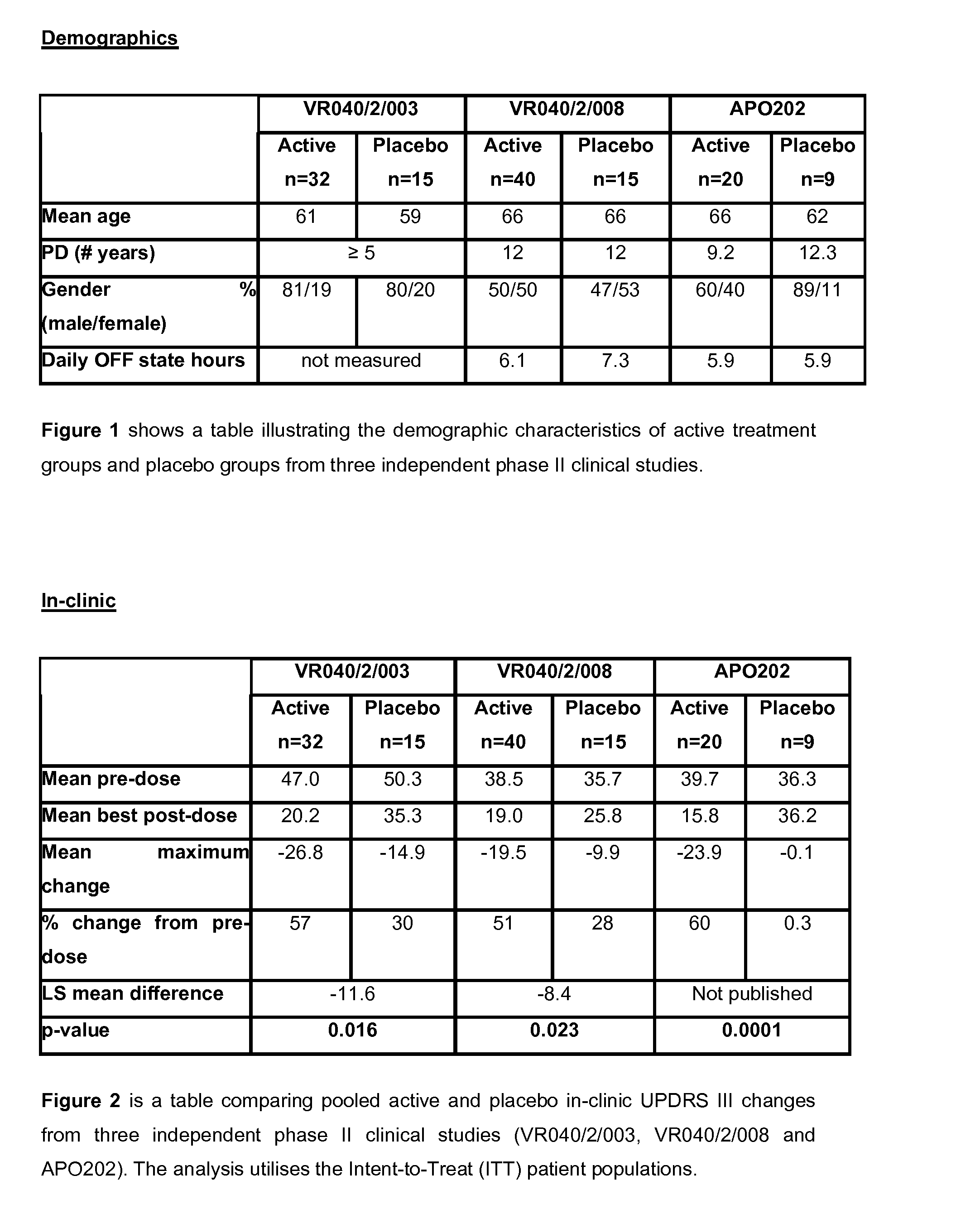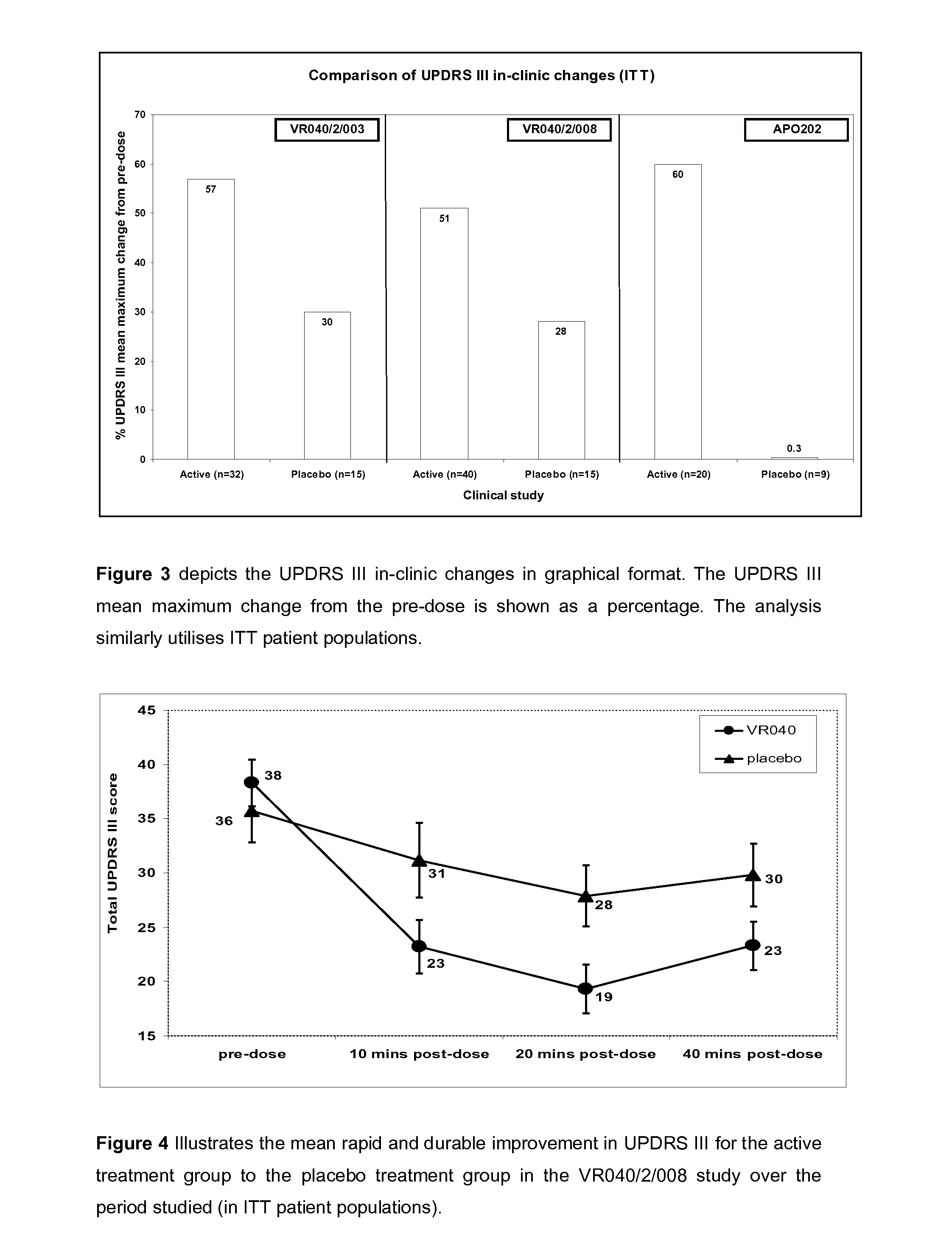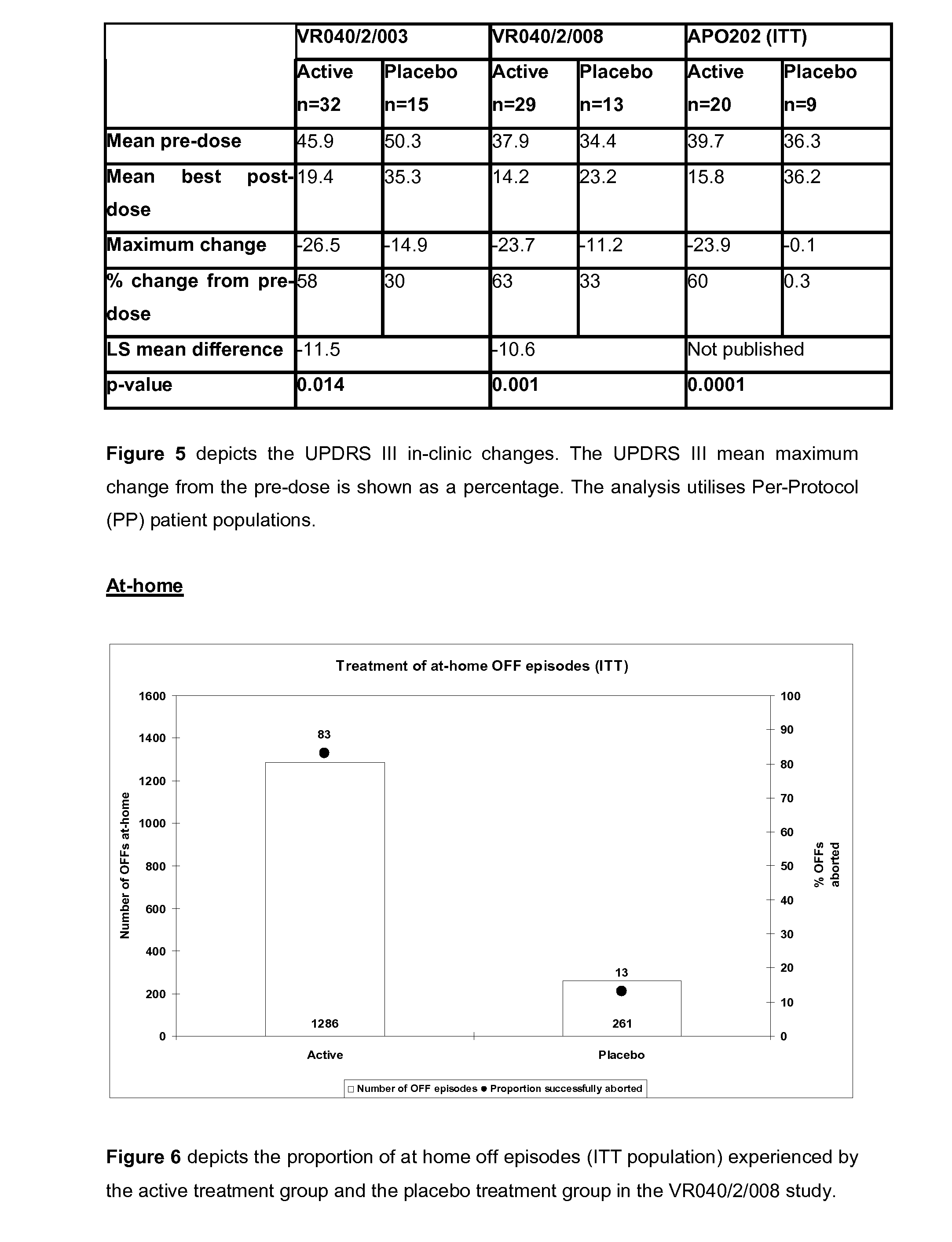Compositions and uses
a technology applied in the field of compositions and uses, can solve the problems of no known cure for parkinson's disease, no known treatment of parkinson's disease, and general deterioration of all brain functions, and achieve the effect of reducing dyskinesia
- Summary
- Abstract
- Description
- Claims
- Application Information
AI Technical Summary
Benefits of technology
Problems solved by technology
Method used
Image
Examples
example 1
[0292]Demographic characteristics including mean age, length of time diagnosed with PD, gender and daily period in “off” state were compared in three independent phase II clinical studies (VR040 / 2 / 003, VR040 / 2 / 008 and APO202). Studies were seen to be comparable in terms of each of the demographic characteristics recorded except for daily period in “off” state, which was not measured in the VR040 / 2 / 003 study. FIG. 1 shows a table illustrating the demographic characteristics of active treatment groups and placebo groups from three independent phase II clinical studies. The active study treatment group and the placebo group were comparable for the VR040 / 2 / 008 study.
example 2
Efficacy in-Clinic
[0293]One of the co-primary efficacy end points was the maximum change in total UPDRS III score from pre-dose to post-dose during the in-clinic dosing titration period. FIG. 2 summarises active and placebo in-clinic UPDRS III changes for the ITT populations from three independent phase II clinical studies (VR040 / 2 / 003, VR040 / 2 / 008 and APO202). The active treatment group from the VR040 / 2 / 008 study displayed a clinically relevant and statistically significant improvement, compared with the placebo group (p=0.023).
[0294]The UPDRS III in-clinic mean maximum changes from the pre-dose as a percentage in three independent clinical studies is summarised in FIG. 3. The VR040 / 2 / 008 active treatment group demonstrated a 51% UPDRS III mean maximum change from the pre-dose compared to a 28% change seen in the placebo group (ITT patient populations).
[0295]FIG. 4 illustrates the mean rapid and durable improvement in UPDRS III for the active treatment group which is superior to th...
example 3
Efficacy at-Home
[0297]Another of the co-primary efficacy end points was the change in “off” time per day compared with the baseline value. FIG. 6 illustrates the increased ability of active treatment to reproducibly convert patients from “off” to the “on” state with 83% and 13% of active (n=1286) and placebo (n=261) treated OFF episodes being successfully aborted. FIG. 7 compares active and placebo changes in the daily “off” time per day during the at-home dosing period of 2 independent phase II clinical studies (VR040 / 2 / 008 and APO202). The active treatment group from the VR040 / 2 / 008 study was shown to reduce the time patients were in an “off” state by over 2 hours, a change considered by investigators to be highly clinically relevant, when compared with the placebo group. The change in mean daily “off” time in hours has also been depicted graphically in FIG. 8, which specifically compares the reduction in the mean daily “off” time in the active treatment and placebo groups from th...
PUM
| Property | Measurement | Unit |
|---|---|---|
| particle size | aaaaa | aaaaa |
| volume | aaaaa | aaaaa |
| diameter | aaaaa | aaaaa |
Abstract
Description
Claims
Application Information
 Login to View More
Login to View More - R&D
- Intellectual Property
- Life Sciences
- Materials
- Tech Scout
- Unparalleled Data Quality
- Higher Quality Content
- 60% Fewer Hallucinations
Browse by: Latest US Patents, China's latest patents, Technical Efficacy Thesaurus, Application Domain, Technology Topic, Popular Technical Reports.
© 2025 PatSnap. All rights reserved.Legal|Privacy policy|Modern Slavery Act Transparency Statement|Sitemap|About US| Contact US: help@patsnap.com



